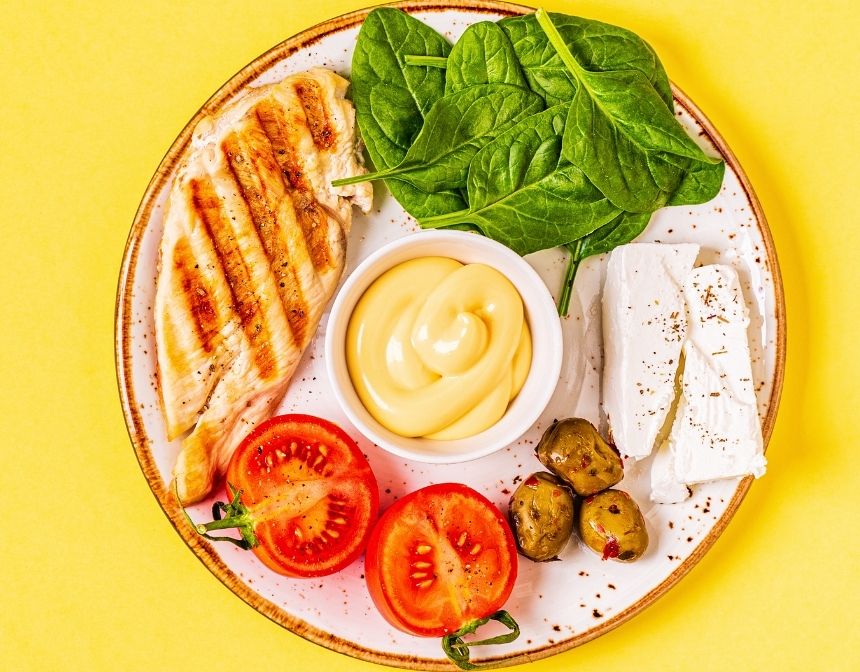Do You Need To Soak Pecans Before Roasting?
No, you don't necessarily need to soak pecans before roasting them for a recipe like candied pecans. Soaking nuts is often done as part of a process called sprouting, which is believed to make the nuts easier to digest and their nutrients more easily absorbed by the body. This process usually involves soaking the nuts in water for several hours or overnight, then draining and rinsing them before allowing them to dry out completely.
However, for roasting and candy pecans, the process is different. Typically, the pecans are coated in a sweet syrup or sugar mixture and then roasted to allow the sugar to caramelize and form a crispy coating on the nuts. In this case, soaking the pecans beforehand would make it more difficult for the sugar to stick to the nuts and could result in a less crispy coating.
So, unless a recipe specifically calls for it or you are looking to sprout the nuts for health reasons, you do not need to soak pecans before roasting them.
Why Are My Candied Pecans Chewy?
Candied pecans can turn out chewy instead of crunchy for a couple of reasons:
Insufficient Roasting Time: One of the most common reasons is not roasting them for long enough. The sugar needs enough time to harden to create the crunchy exterior. Make sure to roast the pecans at the recommended temperature and for the full duration specified in the recipe.
Excess Moisture: Another reason could be too much moisture. If your pecans were not fully dried before you started, or if you used too much coating, the extra moisture can prevent the pecans from crisping up properly.
Incorrect Cooling: Finally, cooling is a critical step. If your candied pecans are not allowed to cool completely, the sugar may not have a chance to fully harden, resulting in a chewy texture.
To avoid chewy candied pecans, ensure your pecans are dry before you start, follow the recommended roasting time and temperature, and allow your candied pecans to cool completely before storing or eating.
How Much Sugar Is In Candy Pecans?
The sugar content in candied pecans can vary greatly depending on the recipe and serving size. For example, if you follow the above recipe, which uses 1 cup of sugar for about 4 cups of pecans, and you consider a serving size to be about 1/4 cup of pecans, you're looking at approximately 4 grams of sugar per serving. This is a rough estimate and the actual sugar content can be more or less depending on the exact measurements used and how thoroughly the pecans are coated in the sugar mixture.
Always remember, while candied pecans are a delicious treat, they are high in sugar and should be eaten in moderation.
What Is The Difference Between Praline Pecans And Candied Pecans?
Candied pecans and praline pecans are both sweet treats that start with the same base ingredient, pecans, but they are made using different methods and have a slightly different end result.
Candied pecans are typically made by coating the pecans in a sugar syrup and then baking them. This results in pecans that are sweet, crunchy, and slightly caramelized.
Praline pecans, on the other hand, are a type of candy that originated in the southern United States, specifically Louisiana. Pralines are made by cooking pecans in a mixture of brown sugar, butter, and cream until it reaches the soft ball stage, and then allowing the mixture to cool and harden into a fudge-like consistency. The end result is a sweet, creamy, and nutty candy.
In essence, while both candied and praline pecans are sweet, the former is crunchier and the latter is creamier.
What To Serve with Homemade Candied Pecans?
Homemade candied pecans are a delightful addition to various dishes and can elevate both sweet and savory recipes. Here are some wonderful ways to serve candied pecans:
Salads: Sprinkle candied pecans over mixed green salads, spinach salads, or fruit salads. The sweet and crunchy pecans add a lovely contrast to the fresh and vibrant flavors of the greens and fruits.
Desserts: Use candied pecans as a topping for ice cream, yogurt parfaits, or desserts like cakes, pies, and tarts. They add a delightful crunch and a touch of sweetness to your favorite sweets.
Cheese Board: Incorporate candied pecans into cheese boards alongside various cheeses, dried fruits, and crackers. They complement the cheeses' richness and bring a delightful sweetness to the board.
Breakfasts: Sprinkle candied pecans over oatmeal, pancakes, waffles, or yogurt bowls to add a delicious crunch and enhance the overall flavor of your breakfast.
Roasted Vegetables: Toss candied pecans with roasted vegetables like sweet potatoes, butternut squash, or Brussels sprouts to create a sweet and savory side dish.
Stuffings: Use candied pecans as an ingredient in stuffing recipes for poultry dishes. The sweetness of the pecans adds a unique twist to the traditional savory stuffing.
Trail Mix: Create your own trail mix by combining candied pecans with dried fruits, chocolate chips, and other nuts. It's a perfect on-the-go snack with a delightful blend of flavors.
Cheese Balls or Cheese Logs: Incorporate candied pecans into cheese balls or cheese logs for a delicious and eye-catching appetizer.
Caramel Popcorn: Add chopped candied pecans to caramel popcorn for a tasty and indulgent treat.
Gift Giving: Package homemade candied pecans in decorative jars or bags to give as thoughtful and delicious homemade gifts for friends and family.
How To Store Homemade Candied Pecans?
To ensure your homemade candied pecans stay fresh and maintain their delightful crunch, it's essential to store them properly. Here's how to store homemade candied pecans:
- Cool Completely: Allow the candied pecans to cool completely on the baking sheet before transferring them to a storage container. This helps them harden and retain their crunchy texture.
- Airtight Container: Store the cooled candied pecans in an airtight container. You can use a resealable plastic bag, a glass jar with a tight-fitting lid, or a food storage container with a secure seal. Make sure the container is clean and dry before adding the pecans.
- Room Temperature: For short-term storage (up to two weeks), you can keep the candied pecans at room temperature in a cool, dry place, such as your pantry or kitchen cabinet.
- Refrigerator: If you want to extend their shelf life, you can store the candied pecans in the refrigerator for several months. The cold temperature helps prevent the natural oils in the pecans from going rancid.
- Freezer: For even longer storage, you can freeze candied pecans. Place them in an airtight container or a freezer-safe resealable bag and store them in the freezer for up to six months. Freezing helps maintain their freshness and prevents them from absorbing odors from other foods in the fridge.
- Avoid Moisture: Ensure that no moisture comes in contact with the candied pecans during storage, as it can cause them to become soft and lose their crunch.
Separate Layers: If you're stacking multiple layers of candied pecans in a container, consider placing parchment paper or wax paper between the layers to prevent them from sticking together.
Origins of Candied Pecans
Candied pecans have long been a beloved treat, their sweet, slightly crunchy texture making them a favorite for snacking and a delightful addition to various dishes. Originally, they are believed to have been popularized in the Southern United States, where pecan trees are abundant. But these sweet and crunchy nuts have far-reaching appeal, finding their way into kitchens around the world. With their rich, buttery flavor enhanced by a sweet caramelized coating, they serve as an irresistible standalone snack and a versatile ingredient in the culinary world.
One popular application of candied pecans is their use in salads. Tossed with mixed greens, goat cheese, and perhaps some fresh fruit, the addition of candied pecans provides a delightful textural contrast and a hint of sweetness that can elevate the salad from ordinary to extraordinary. The process of 'how to candy pecans' is relatively straightforward and easy, making it accessible even to novice cooks.
Recently, with the rise of dietary preferences and restrictions, variations on the classic candied pecan recipe have begun to emerge. For those following a ketogenic diet, 'keto candied pecans' offer a way to enjoy this treat while sticking to low-carb guidelines. These typically substitute traditional sugar with a sugar substitute like erythritol or monk fruit sweetener. On the other hand, for those who enjoy a bit of a kick with their sweet treats, 'spicy candied pecans' offer a tantalizing balance of heat and sweetness. These typically include a touch of cayenne or other hot spices in the sugar coating. Regardless of the variation, the making of candied pecans is typically an 'easy candied pecans' process, making it a joy to prepare and enjoy.







































